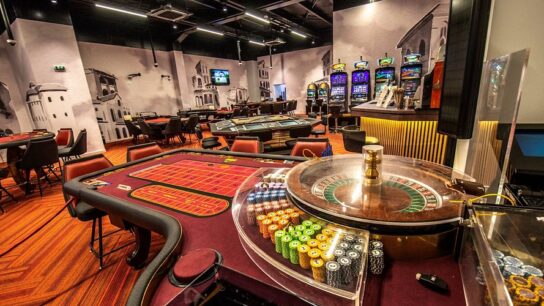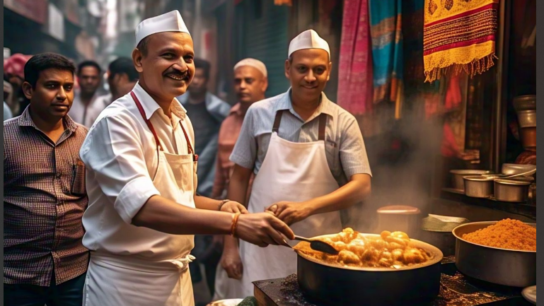Soccer has captured hearts worldwide for generations. Understanding match durations can boost enjoyment, especially for new fans. Let’s explore soccer game lengths and factors affecting total playing time.
Related: Take charge of your แทงบอลออนไลน์ journey with FINNBet, the platform designed to empower every bet you place.
A standard professional soccer match runs for 90 minutes. It’s split into two 45-minute halves. This format has been used since 1866.
Unlike American football, soccer has a continuously running clock. The 2022 World Cup in Qatar attracted many new American fans. As the USWNT chases their third World Cup win, knowing match durations is key.
Key Takeaways
- A standard soccer match lasts for 90 minutes, split into two 45-minute halves.
- Stoppage time, also known as added time, is added at the discretion of the referee to account for delays.
- Halftime breaks can last up to 15 minutes, although teams may resume play sooner if ready.
- Professional soccer matches can extend beyond 90 minutes into extra time and penalty shootouts in certain tournament scenarios.
- Television broadcasts do not affect the length of soccer games, as the rules governing match duration are strictly enforced.
Understanding Standard Match Duration and Structure
Professional soccer matches last 90 minutes. They’re split into two 45-minute halves. This setup ensures fair play and consistent timing for all teams.
A 15-minute halftime break separates the two halves. Players rest and regroup during this time. Coaches can make substitutions and adjust their game plan.
Regular Playing Time and Halves
The 90-minute format is standard across all professional soccer levels. This includes youth leagues and high-profile tournaments. Each half lasts 45 minutes, ensuring fairness in the sport.
Halftime Break Requirements
The 15-minute halftime break is mandatory in soccer matches. It allows players to rest and hydrate. Coaches use this time to make tactical changes and address any issues.
Professional vs Amateur Game Lengths
Professional soccer leagues follow the 90-minute format. These include the English Premier League and UEFA Champions League. Amateur soccer match durations may vary based on age group and league rules.
Younger players often compete in shorter matches. Game lengths can range from 10 to 30 minutes per half. This depends on the players’ developmental stage.
| League/Competition | Game Length |
|---|---|
| Professional Soccer (e.g., EPL, La Liga, UEFA Champions League) | 90 minutes (2 x 45-minute halves) |
| High School Soccer | 80 minutes (2 x 40-minute halves) |
| Youth Soccer (under 6 years old) | 20 minutes (2 x 10-minute halves) |
| Youth Soccer (under 12 years old) | 50 minutes (2 x 25-minute halves) |
How Long Are Soccer Games: Stoppage Time Explained
Soccer games last 90 minutes, split into two 45-minute halves. However, matches often go longer due to stoppage time. The referee decides this extra time.
Stoppage time makes up for significant pauses during the game. These include substitutions, injuries, and video assistant referee (VAR) reviews. The referee tracks these interruptions and adds extra time.
Usually, a few minutes are added at each half’s end. Recently, stoppage time has increased dramatically. Some matches now see 5 to 10 extra minutes per half.
“The objective is to offer more show to the fans and ensure more actual playing time,” said a FIFA spokesperson, explaining the rationale behind the extended stoppage time.
The 2023 World Cup group stage saw longer stoppage times become normal. Referees aim to reduce time-wasting and increase action for spectators.
| Match | Stoppage Time (1st Half) | Stoppage Time (2nd Half) |
|---|---|---|
| England vs. Iran | 14:08 | 13:08 |
| USA vs. Wales | N/A | 10:34 |
| Senegal vs. Netherlands | N/A | 10:03 |
This table shows the longest stoppage times in recent World Cup matches. It highlights the trend of extended added time in soccer games.
Extra Time and Special Game Scenarios
Soccer matches can extend beyond the standard 90-minute regulation time. Extra time is used when a game is tied at the end of regulation. This scenario adds excitement to the sport.
Tournament Knockout Stages
Extra time is crucial in tournament knockout stages. It consists of two 15-minute periods, totaling 30 minutes. If the game remains tied, a penalty shootout determines the winner.
Penalty Shootout Procedures
Penalty shootouts are thrilling finales to tied matches. Each team takes five alternating penalty kicks. If still tied, the shootout continues in sudden-death format until a winner emerges.
The 2012 African Cup of Nations final needed 12 rounds of penalties. This shows how intense these shootouts can become.
Historical Match Duration Examples
Extra time and penalty shootouts have created memorable moments in soccer history. The 1999 UEFA Champions League Final saw Manchester United score twice in added time.
They snatched victory from Bayern Munich in a dramatic finish. In contrast, the 2014 World Cup semifinal between Brazil and Germany ended 7-1 in regulation time.
| Match Scenario | Duration |
|---|---|
| Standard Regulation Time | 90 minutes (2 x 45 minutes) |
| Extra Time | 30 minutes (2 x 15 minutes) |
| Penalty Shootout | Variable, potentially unlimited rounds |
Conclusion
Soccer game duration is crucial for fans worldwide. The standard 90-minute format, split into two halves, provides a consistent structure. This allows for strategic play, dramatic moments, and tests of endurance.
Factors like stoppage time, extra time, and penalty shootouts influence game length. These elements add excitement and tension to each minute of play. The rules apply equally to men’s and women’s soccer, ensuring gender equality.
Game duration connects fans and players across all levels. From professional leagues to youth matches, it remains a constant. This time-honored tradition helps us appreciate soccer’s dynamic nature.
FAQ
How long are standard soccer games?
A standard soccer game lasts 90 minutes. It’s divided into two 45-minute halves. This format has been used since 1866.
How does soccer’s game clock differ from American football?
Soccer has a continuously running clock during the game. There are no stoppages for play clock resets or commercial breaks.
How has the 2022 World Cup impacted soccer’s popularity in America?
The 2022 World Cup has attracted new American fans to soccer. The U.S. Women’s National Team (USWNT) is chasing their third World Cup win in 2023.
What is the duration of a professional soccer match?
Professional soccer matches last 90 minutes in total. They have two 45-minute halves with a 15-minute halftime break.
How do youth and high school soccer games differ in duration?
Youth soccer games are shorter. The youngest groups play two 10-minute halves. High school soccer typically lasts 80 minutes, with two 40-minute halves.
Are there any variations in game length for amateur soccer leagues?
Amateur soccer leagues may use the 90-minute format. Some leagues have their own variations in game duration.
What is stoppage time, and why is it added to soccer games?
Stoppage time is added at the end of each half. It accounts for significant breaks like substitutions, injuries, and goal celebrations.
The referee decides how much stoppage time to add. It’s usually a few minutes per half but can vary.
How has the added stoppage time at recent World Cups impacted the viewing experience?
The 2022 and 2023 World Cups have seen more stoppage time. Five minutes or more is now common at the end of both halves.
What happens in the event of a tie after regulation time in knockout competitions?
In knockout games, ties lead to two 15-minute periods of extra time. If still tied, a penalty shootout decides the winner.
Can you provide examples of notable soccer matches with unique durations?
The 2012 African Cup of Nations final needed 12 penalty rounds. In 1999, Manchester United scored twice in added time to win the Champions League.
The 2014 World Cup saw Germany beat Brazil 7-1 in regular time.
Related: Find more related articles by visiting our blog—click here to read






